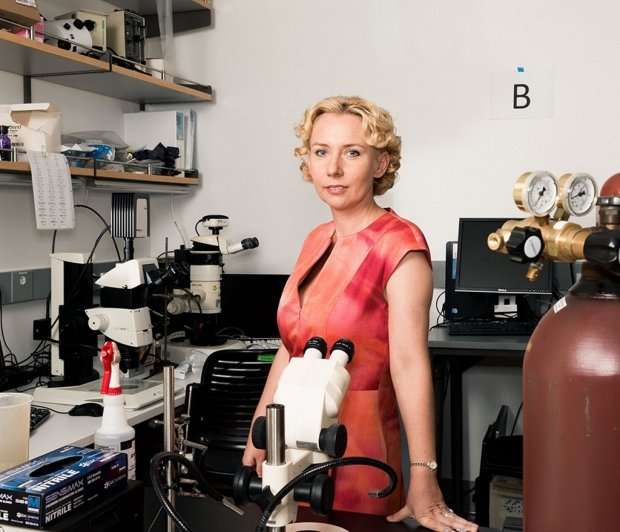Dynamic DNA dance identified with new CRISPR/Cas9-based labeling

DNA twitches during transcription to bring distant regions in contact and enhance gene expression, according to Stanford researchers who devised a new way to label individual, non-repetitive DNA sequences.
DNA flails about during transcription like a strand of spaghetti being sucked through pursed lips, School of Medicine researchers have found. Like the resulting out-of-control flying globs of sauce, the surprising discovery flies in the face of conventional wisdom, which posits that static loops of DNA are required to bring together distant regions that enhance and promote gene expression.
A new DNA labeling technique, which can precisely tag any individual stretch of DNA with fluorescent molecules to track their three-dimensional locations and movements, revealed this genetic dance. The technique, which the researchers have termed CARGO, for chimeric array of gRNA oligo, is a variation of the CRISPR/Cas9 gene-editing tool, and it promises to revolutionize the study of genome dynamics.
'Entirely unexpected and surprising'
"We've found that, as the polymerase plows across the DNA, it provides a source of molecular agitation that increases mobility within a local chromosome domain and can repeatedly bring distant regions of the genome together," said Joanna Wysocka, Ph.D., professor of developmental biology and of chemical and systems biology. "This was entirely unexpected and surprising, and directly counters the prevailing beliefs about transcription. It's just one example of what we and others can now learn by using CARGO to label specific DNA regions."
A paper describing the research was published Jan. 25 in Science. Wysocka is the senior author, and graduate student Bo Gu is the lead author.
CRISPR is most commonly used to seek out and replace specific DNA sequences in the genome with other DNA sequences. To do so, an enzyme called Cas9 uses a short RNA sequence to guide the DNA sequences to the correct spot in the genome.
A variation of the technique that was developed by other researchers instead uses guide RNAs and the CRISPR system with a catalytically inactive form of Cas9 to recognize and label specific stretches of DNA with fluorescent molecules. But that works best on highly repetitive regions where a single guide RNA can marshal the critical mass of fluorescent tags necessary to generate enough light to be seen through a microscope.
Wysocka, Gu and another co-author of the study, Tomasz Swigut, Ph.D., devised a way to introduce an array of many different guide RNAs into a cell to precisely recognize nonrepetitive, unique stretches of DNA and label them with multiple fluorescent tags so they can be easily visualized under a microscope.
'CARGO solves the delivery problem'
"All the most interesting stuff in the genome is present as single copies," Wysocka said. "People have been trying unsuccessfully to label single regions, or loci, for some time. But CARGO solves the delivery problem. Now we can label any region, or locus, that we want by using many different guide RNAs to blanket the DNA so we can see it clearly." She and Gu emphasize that the CARGO technique will be useful to researchers pursuing many different questions about the genome or gene expression.
Already it's opened their eyes about the process of transcription, which is often stimulated when distant enhancer regions are brought into close proximity with other DNA regions called promoters.
"We found that any locus we looked at moved about four times faster in its active state, when nearby genes are being transcribed into RNA," Wysocka said. "We propose that this enhanced movement, or diffusion, is likely to bring distant regions of the DNA together and further promote transcription."
More information: Bo Gu et al. Transcription-coupled changes in nuclear mobility of mammalian cis-regulatory elements, Science (2018). DOI: 10.1126/science.aao3136
Journal information: Science
Provided by Stanford University Medical Center




















